
|
Stephen Brook Paperback - 700 pages ( 1 October, 1999)Faber and Faber; ISBN: 0571190308
Divided into three main sections, The Wines of California covers first the main wine regions. The crucial matters of geography, geology, soil structure and climate are discussed and the individual American Viticultural Areas (AVAs) and their sub-appellations profiled. A lengthy and fascinating account of Grapes and Wines covers growing and wine-making methods, and (usefully, given the Californian obsession with varietal wines) the grape varieties planted, including California's own grape, the fabulous Zinfandel. Finally, the most substantial part of the book comprises a gazetteer of wineries with a short profile of each--not, as Stephen Brook remarks, likely to provide racy reading, but of great interest. There are few discussions of individual vintages, which, given the fact that Californian wines are made to be drunk young, would be of limited usefulness, but Brook is free with his opinions and his judgements on some of the makers are sharp. --Robin Davidson Synopsis Book Information This book explains what it is that makes Californian wines distinctive: a combination of climate: soil, tradition and innovation. Stephen Brook examines the history and climate of each major region, shows how certain viticultural and wine-making practices are specific to California and looks at how the principal grape varieties are handled stylistically in different parts of the state. Far from being a dry reference work, this book is studded with the vibrant personalities who keep Californian wines at the forefront of top-quality wine production. Special features of this comprehensive book include detailed lists of single vineyards, now receiving greater attention from wine-makers, and a gazetteer which features more than 630 different wineries, pointing to the best and most interesting wines from each. Buy this book from amazon.co.uk
Tom Cannavan Paperback - 160 pages (21 September, 2000) A simple search for wine-related subjects on the Internet will confirm that wine has adopted the web in a fashion unlike any other food or drink subject. The downside is a cyber-space so crowded with wine-related sites that it makes for a time-consuming and often frustrating surfing experience. This book contains around 100 in-depth reviews of related websites. It is aimed at everyone who is frustrated by the confusion of material on the Internet, much of which is misleading and uninformative. Readers are pointed towards concise and authoritative information about the specific wine areas they are interested in. "The Good Web Guide to Wine" casts a knowledgeable and critical eye over the world of on-line wine, pin-pointing those sites that really deliver the goods and sifting out those that merely flatter to deceive. The Internet has been scoured for the best sites in a number of categories including wine appreciation, wine sales, regional guides, on-line magazines, educational resources and those sites that simply celebrate the joy of wine. To qualify for inclusion, not only must sites have the highest standard of content, but they must be up-to-date and easy to use. Buy this book from amazon.co.uk
Bruce Cass (editor), Jancis Robinson (editor) Hardcover - 320 pages (August 2000)Oxford University Press; ISBN: 019860114X Reviews www.wineanorak.com Jancis Robinson's Oxford Companion to Wine is one of the classics of modern wine publishing, and this volume, edited by Bruce Cass (but with Jancis listed as consultant editor) is intended as a partner volume, dealing specifically with the wines of North America. It's perhaps a little unfair to Bruce Cass that Jancis' name should be associated with this book -- her direct contribution is limited to just a couple of short essays in the first section, although of course it certainly helps to raise its profile. The book itself is divided in two. The first 60 pages are devoted to 15 well-written, concise and essays on an eclectic range of subjects pertinent to the North American wine scene. These are quite absorbing, covering subjects as diverse as 'Commentators and the wine media', 'Microbiology in North American wine', 'North American geneticists untangle the vine variety web', and 'Cybersales and the future'. The next 220-odd pages consist of the A-Z entries, much in the style of the parent volume (which is extensively cross-referenced). Whilst these are pretty scholarly, they are written in a style that's lively enough to make this section fun to browse through (preferably glass in hand). Bruce Cass pens many of the entries, and his writing has a gentle but still-appropriate sense of humour to it; other entries are authored by a team of eight experienced contributors of different specializations. To finish off, there's a full index that makes a useful (and necessary) adjunct to the alphabeticized entries (a feature that books of this sort often lack). Although the majority of the book is black and white, and illustration-free, there are eight double-sided colour plates, tipped-in in pairs at four locations. This is a valuable addition to any enthusiast's library, and as well as a useful reference for answering specific queries, it’s just the sort of book I like to dip into from time-to-time for some absorbing browsing. Synopsis Buy this book from amazon.co.uk
Oz Clarke Hardcover - 297 pages (14 September, 2000) Reviews Amazon.co.uk One of the most useful portable all-round guides to wines, vintages, producers, grapes and wine regions, Oz Clarke's Pocket Wine Book has always been a fount of down-to-earth wisdom and good sense. The 2001 edition comes along and is no exception. Seasoned punters who have gone the course with Oz will know what to expect--trenchant views, clearly expressed; encyclopaedic knowledge lightly worn; and second-hand access to what is said to be one of the finest noses in Europe. For an expert of his standing, Oz Clarke can be very refreshing at times. (On fizz: "I sometimes think it doesn't matter what it tastes like as long as it's cold enough and there's enough of it".) Ease of use is among the great virtues of this little book: there's no point flicking back and forth among the cross references when you're standing in a crowded supermarket wine department. It's simple to find what you want among the 1,600 entries once the single page of How To Use rules has been absorbed. New sections added for 2001 include a fascinating and highly eclectic selection of personal favourites, and a series of Wines of the Year categories--in effect, Top Tips, such as "World Class Wines that Won't Cost the Earth", "Regions to Watch" and so on. Self-recommending, therefore, as always. --Robin Davidson Buy this book from amazon.co.uk
Oz Clarke Paperback - 509 pages (14 September, 2000)
Book Description From the Author We call ourselves a Wine Buying Guide, and we intend to interpret 'guide' in as open and friendly a way as possible. We're not scouring the country trying to pinpoint every town's fleeting and profit-strangling 'best-buy'; we're not interested in one-off 'special offers' which are sold out a week after we go to press. No, what we want is to give everyone the confidence to know what a given wine should cost; to say that just because it's cheaper doesn't mean that it's necessarily a better bargain, and to point out the areas which seem to us to be particularly good or bad value. With the tremendous range of wines available we have no need to buy bad wine. Every shop will have better wine at the same price - or less - if we know what to ask for. It's our job to make that choice easier - to make sure we all know where to find good wine, and what we should pay. That's why Oz Clarke's Wine Buying Guide is here Buy this book from amazon.co.uk
Oz Clarke Hardcover - 144 pages (14 September, 2000)
Reviews Amazon.co.uk You've seen him doing it on telly, all that swirling and sniffing and slurping and spitting, you've flicked through a few of his books, but you really aren't that interested in wine. The idea doesn't do much for you. But Oz Clarke won't give up. He still has designs on you and your palate. The latest manoeuvre in his campaign to educate the world's taste-buds is Oz Clarke's Introducing Wine, an ungainly title for an elegant little book. Subtitled "A Complete Guide for the Modern Drinker", it offers a simple, but not simplistic, entry into the pleasures of wine. Oz Clarke takes something of a Year Zero approach to wine: forget the mystique, the reputations, the inflated prices, the snobbery--all that matters is the quality. Consequently he approaches all wines in the same spirit, asking the same questions in a kind of catechism. Part I covers briefly but incisively the major grape varieties, an essential starting point in this wine world view, grouping them in flavour categories such as Spicy, Warm-hearted Reds or Green, Tangy Whites. Amusingly, and effectively, the special flavours of each class are illustrated rather than described at length, the Green, Tangy Whites being accompanied by a skewer of gooseberry, apple, mint, lime, asparagus and green pepper. Part II deals effectively with the practicalities of enjoying wine--opening the bottle, serving wine etc. Part III is the meat of the book, dealing with the major wine-producing countries, divided into regions as appropriate. For each, he provides a Quick Guide, describing location, principal grape varieties, top vintages and label recommendations; then asks his standard set of questions: Do regions matter? Do vintages matter? When do I drink them? and Can I afford them? As ever with Oz Clarke, the answers are honest, reliable, utterly without prejudice and invigoratingly written. --Robin Davidson Book Description Here, at last, from Oz Clarke, the UK's most popular wine writer, comes the ultimate no-nonsense guide to wine. No jargon. No frills. No previous knowledge assumed. Just how to enjoy the kind of wine that is actually in the shops at the moment. In this volume, wine jargon is explained in simple terms, expert tips give you the inside track, and wine snobbery and wine myths are put firmly in their place. Straightforward explanations detail what wine is, how it is made and why both flavour and quality vary so much from one wine to the next. A guide to the most important grapes (Cabernet Sauvignon, Chardonnay) describes their characteristic tastes and styles and the sorts of foods they go well with. All the key elements of enjoying wine are included: how to taste, buy, store and serve wine, how to choose wine in a restaurant and how to match wine and food. A virtual tour of the shelves of a wine shop gives essential information on the wines of each country and region: the flavours, the styles, the quality and affordability. The guide is aimed at those who want to know about wine and how to make the right choices, without being overwhelmed with information. From the Author I begin by grouping wines into 'flavour families' - they're all based on flavours you'll know and recognise and you will have a pretty good idea if they sound enticing to you or not - do 'juicy fruity reds' or 'intense nutty whites' sound good to you? They do to me! - and this section is your starting point for finding wines you really want to drink. Then, paring away technical details, I introduce you to the all important subject of grape varieties (grapes are what wine's made of after all - and the majority of modern wine is labelled by grape variety these days), then a bit of non-technical stuff about winemaking techniques, and then the practical business of serving and storing wine - and all in as straightforward a way as I know how, by linking everything to how it affects the flavour of the wine in your glass. Most wine books look at the wine-producing regions of the world, and I haven't entirely broken with that tradition, but I've taken a new approach. Yes, I tell you where the wines whose names you see on bottles come from - and it's fun and instructive to know that - but more importantly I try to answer the questions I'm most frequently asked. Do vintages matter? Well, sometimes they do, sometimes they don't, but either way I'll tell you why. Can I afford it? Even if the wines of a particular region are expensive or overpriced, I'll suggest some good-value options that will give you a taste of what it's all about. All in all through the book, I've recommended 300 wines for you to try. Start with the ones you like the sound of and introduce yourself to the exciting modern world of wine. Cheers. Buy this book from amazon.co.uk The Wine Atlas Oz Clarke Hardcover - 304 pages (12 October, 1995) Reviews www.wineanorak.com A cynic might accuse Oz Clarke and his publishers Websters of blatantly ripping off Hugh Johnson's winning formula. This book follows exactly the format of Johnson's classic 'World atlas of wine', with introductory chapters leading through to an atlas-style survey of the world of wine. However, Websters have given an intruiging twist to their Atlas, by producing a series of beautiful handpainted panoramic vineyard maps of each of the major wine regions, which succeed in bringing to life the various vineyard areas. In addition, Oz Clarke writes well in a lively style, and the layout and accompanying photographs surpass even the high standards set by Johnson's fourth edition. Hugh may have been here first, and both atlases are of a very high standard, but if forced to choose between them, Oz Clarke wins by a whisker. Harvey Steiman, Wine Spectator, 15 December 1995 William Leith, Mail on Sunday, 17 December 1995 Roger Voss, Wine Magazine, February 1996 Book Description Fundamental to the understanding of wine is a sense of place. Knowing which country, which region, which hillside and even which vineyard a wine comes from adds enormously to the pleasure of drinking it. Through its unique cartography and Oz Clarke's lively prose, this revolutionary atlas illustrates and explains the vital connection between the land, the winemaker and his wine and shows how different landscapes as well as the skills of the winemaker contribute to the extraordinary range of flavours found in wine. Synopsis From the Author Initially I wasn't sure I could face writing this huge book, but as soon as my publisher showed me the prototype panoramic map of Chablis, I knew I had to. This is the only wine book that puts you right in the vineyard - and that's where it all begins, in a way what it's all about. And this instant conversion led to 300,000 words of passionate description of the world of wine I love. Buy this book from amazon.co.uk
Oz Clarke, Stephen Spurrier Hardcover - 352 pages (12 November, 1998) Reviews Decanter, December 1998 '...an excellent country by country, personal guide to some of the world's best [wines]. Better still, the producer entries give some of the most descriptive impressions of what you'll actually find in the glass.' Book Description For no more than the price of just one decent bottle of red Bordeaux or a California Cabernet Sauvignon, Clarke & Spurrier's Fine Wine Guide takes you every step of the way. It's the best wine investment you can make. Includes all the names to look out for - best growers and estates, key wine zones Pinpoints existing superstar producers and those wines and producers with star potential Includes personal recommendations from Clarke and Spurrier for each major wine style Offers up-to-date profiles of producers, wines and regions Contains detailed vintage and maturity information including at-a-glance charts and year-by-year assessments Organized by country and wine region, this guide aims to cover only the world's best wines - though not necessarily the best-known. A straightforward format of at-a-glance lists of the best wines, best vineyards, best producers and other essential information is followed by more detailed A-Z lists of the top wine names and top producers within each region or country. The information is cross-referred within each section, so that a wine recommendation can be located by way of the wine name, the cru, the grower or the year. There is also a comprehensive index of thousands of recommended wines and producers. Synopsis From the Author Buy this book from amazon.co.uk
Clive Coates Hardcover - 608 pages (19 October, 2000) Synopsis Buy this book from amazon.co.uk
Clive Coates Hardcover - 576 pages (12 May, 1997)
Buy this book from amazon.co.uk
Rosemary George Paperback - 544 pages (18 June, 2001)
Synopsis Go to the amazon.co.uk catalogue entry for this book
So is it worth buying? I find it a tremendously useful book and would strongly recommend it to anyone interested in French wines. However, like any guide of this nature, it has it flaws: the fact that wines have to be submitted means that some big names are missing; thus if a wine is absent, you don't know whether it didn't make the grade or simply wasn't submitted. In this respect, Hachette is probably at its strongest outside the classic areas of Bordeaux and Burgundy, where the coverage is denser. Another problem is the fact that you don't know who is responsible for the tasting notes: after all, tasting 'by committee' is a dubious process. At least the imprecision of the simple scoring system is to some extent an acknowledgement of this weakness. Overall, though, the sheer size of the scope of this guide makes this an extremely useful resource, and its utlity more than compensates for these weaknesses. I'd say buy it. Go to the amazon.co.uk catalogue entry for this book
James Halliday Paperback - 538 pages ( 3 January, 2000) Reviews Amazon.co.uk The customary remarks with which to preface discussions of Antipodean wines include those exclaiming at how few years it has taken for this youthful industry to find itself competing at the very highest level with the greatest wines in the world. Consider them said. James Halliday, in the 2000 edition of his reliable and authoritative Wine Companion, Australia and New Zealand also takes the maturity and perfection of the best Oz / NZ wines for granted. His grading system for wineries runs to five stars ("Outstanding winery regularly producing exemplary wines"), while for individual vintages he goes even further: five wine glasses signify 94-97 out of 100--"As close to perfection as the real world will allow". (98-100 is an unachievable ideal.) Restricting himself to the top 20% of Australian and New Zealand wines, James Halliday can afford to be generous. Sensibly listing wineries alphabetically by name only, rather than, say, by region, which can be confusing, he profiles each establishment briefly and succinctly, listing and rating the vintages, as well as giving useful information such as contacts and opening hours. (These lists are useful to those on the spot at least: it's interesting how many of even the major wineries depend to a large extent on cellar door and direct mail sales.) Food partnerships are suggested, not as fixed rules but as additional, "subliminal" indications of wine styles. He can be quirky, too. Even where he disapproves of the wines, something can be rescued. A case in point would be the unfortunate Jackson's Hill winery, where the wines are judged "not exhilarating" but "Jackson's Hill does produce the most marvellous home-made chocolates I have tasted in a long time". --Robin Davidson Synopsis Buy this book from amazon.co.uk
James Halliday Hardcover - 416 pages ( 4 March, 1999) www.wineanorak.com Another atlas-format work, this time by the most influential voice of the Australian wine scene, James Halliday. This time there is less focus on the maps (which are rather simple), and more on the different producers (within each region there is a review of the leading domaines). Nicely illustrated and a useful resource for anyone planning a trip to antipodean wine country. Synopsis Buy this book from amazon.co.uk
James Halliday, Hugh Johnson Mitchell Beazley, London, 1992 (ISBN 1 85732 422 6).
Buy this book from Amazon.co.uk
Julian Jeffs Paperback - 460 pages (24 January, 2000)Faber and Faber; ISBN: 0571175325 Buy this book from amazon.co.uk
Hugh Johnson, Jancis Robinson Hardcover - 352 pages 5th Ed (1 September, 2001)
Go to the amazon.co.uk catalogue entry for this book
Hugh Johnson Hardcover - 280 pages (14 September, 2000)Mitchell Beazley; ISBN: 1840003219 Synopsis Buy this book from amazon.co.uk
Hugh Johnson Hardcover - 480 pages ( 1 August, 1998)Mitchell Beazley; ISBN: 1840001208
Buy this book from amazon.co.uk
Hugh Johnson Hardcover - 254 pages (28 October, 1974)
Buy this book from amazon.co.uk
Robert Joseph Paperback - 335 pages (7 September, 2000)Dorling Kindersley; ISBN: 0751327786 Synopsis Buy this book from amazon.co.uk French Wines Robert Joseph Paperback - 240 pages ( 4 November, 1999) Reviews Synopsis A handbook on wines and wine-growing regions in France. Each major wine region is mapped and profiled with information on influences such as climate, soil type, aspects and grape variety. For each of the six major regions featured there are specialy devised tours. There is also a cross-reference feature that allows the reader to choose an element from a label and find out more about their chosen bottle. Added to this there is information on how wine is made, tasting, buying, storing and serving. Buy this book from amazon.co.uk
Patrick Matthews Paperback - 326 pages (20 October, 1997)Faber and Faber; ISBN: 057119043X Reviews wineanorak.com In this book Patrick Matthews sets out to explore the 'ureported wine revolution' as he calls it - the increasing number of small producers who are taking wine back to its regional roots, and in contrast to the legion of bland international-style wines that have flooded our supermarket shelves, are producing wines with real personality and flavour, often at quite reasonable prices. It is a laudable aim, and I for one am fully sympathetic to his cause. Matthews has done his research, he's well informed, and many of the chapters make gripping reading. I especially liked one of the later chapters, 'Cutting out the middle men', which gives a fascinating insight into the machinations of the UK wine trade. The book can also be applauded in that it is pioneering: in contrast to many wine publications it doesn't just go over the same old ground. My main criticism, however, is that The wild bunch feels somewhat unfinished: the writing style is at times quite hard work, and the transition from one subect or chapter to the next is jerky, lacking continuity. The copyediting is pretty poor too (see e.g. the footnote on page 11). If the author had just spent more time re-writing and polishing the book, and had the services of a good editor, I think he could have made it into a classic. As it stands, it is worth reading solely on the basis of the excellent concept and fascinating snippets, even if they are not laced together too carefully. A useful additional feature (which unfortunately will cause the book to date faster) is that each chapter comes complete with a list of recommended wines and their suppliers in the UK, which greatly enhances the utility of the book. A useful addition to any winelovers bookshelf Synopsis The author, Patrick Matthews patrick_matthews@compuserve.com, 29
July, 1999 Buy this book from amazon.co.uk
Richard Mayson Paperback - 256 pages ( 1 November, 1999)Faber and Faber; ISBN: 0571195229 Richard Mayson is well known for his expertise on Portuguese wines. Buy this book from amazon.co.uk
Richard Mayson Hardcover - 224 pages (December 1997)
Buy this book from amazon.co.uk
On to Authors P-Z | Back to top
|

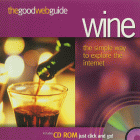 The Good Web Guide to
Wine
The Good Web Guide to
Wine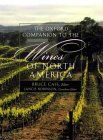 Oxford Companion to
the Wines of North America
Oxford Companion to
the Wines of North America Oz Clarke's Pocket Wine Book 2001
Oz Clarke's Pocket Wine Book 2001 Oz Clarke's Wine Buying
Guide 2001
Oz Clarke's Wine Buying
Guide 2001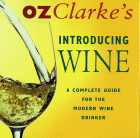 Introducing Wine
Introducing Wine Clarke and Spurrier's
Fine Wine Guide
Clarke and Spurrier's
Fine Wine Guide An Encyclopedia of the
Wines and Domaines of France
An Encyclopedia of the
Wines and Domaines of France Cote D'Or
Cote D'Or

 Australia and New Zealand Wine
Companion: 2000
Australia and New Zealand Wine
Companion: 2000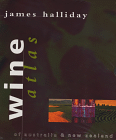 Wine Atlas of
Australia and New Zealand
Wine Atlas of
Australia and New Zealand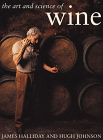 The art and science of wine
The art and science of wine
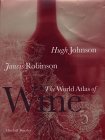
 Hugh Johnson's Pocket Wine Book 2001
Hugh Johnson's Pocket Wine Book 2001 Hugh Johnson's Story of Wine
Hugh Johnson's Story of Wine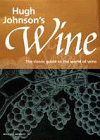 Wine
Wine Sunday Telegraph Good
Wine Guide 2000/2001
Sunday Telegraph Good
Wine Guide 2000/2001 The Wild Bunch : Great Wines From Small Producers
The Wild Bunch : Great Wines From Small Producers Port and the Douro
Port and the Douro Portugal's Wines and
Winemakers
Portugal's Wines and
Winemakers